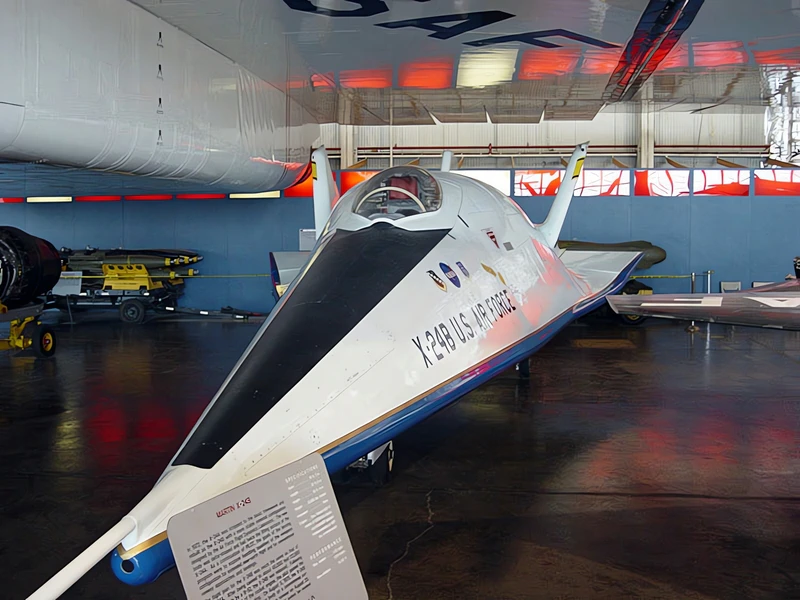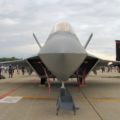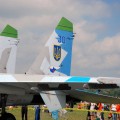
Martin Marietta X-24 | |
|---|---|
| Riik | USA |
| Rolli | Kontseptsiooni demonstraatorlennuk |
| Esimene lend | 24. oktoober 2000 |
| Ehitatud | 2 |
2007 Martin Marietta X-24 was an American experimental aircraft developed from a joint United States Air Force-NASA program named PILOT (1963–1975). It was designed and built to test lifting body concepts, experimenting with the concept of unpowered reentry and landing, later used by the Space Shuttle. Originally built as the X-24A, the aircraft was later rebuilt as the X-24B. The X-24 was drop launched from a modified B-52 Stratofortress at high altitudes before igniting its rocket engine; after expending its rocket fuel, the pilot would glide the X-24 to an unpowered landing.
Allikas: Martin Marietta X-24 Vikipeedias
| Martin X-24B tõstekeha kõnnib ringi | |
|---|---|
| Fotograafid | John Heck, Randy Ray |
| Lokaliseerimine | USAFi rahvusmuuseum |
| Fotod | 36 |
| Martin X-24A tõstekeha kõnnib ringi | |
|---|---|
| Fotograafid | John Heck, Randy Ray |
| Lokaliseerimine | USAFi rahvusmuuseum |
| Fotod | 34 |
Vaata ka:
2007 Martin Marietta X-24 oli tähelepanuväärne eksperimentaalne lennuk, mis katsetas kere tõstmise teostatavust taassisenemiseks ja maandumiseks. Tõstekered on sõidukid, mis tekitavad tõstejõudu pigem oma kuju kui tiibade järgi. X-24 oli osa Ameerika Ühendriikide õhujõudude ja NASA ühisprogrammist nimega PILOT, mis kestis aastatel 1963–1975. Programmi eesmärk oli uurida võimalust kosmoselaev orbiidilt tagasi tuua ja maanduda nagu lennuk etteantud kohta.
X-24-l oli kaks versiooni: X-24A ja X-24B. X-24A oli paks, lühike pisarakujuline vertikaalsete uimedega. See tegi oma esimese libisemislennu 1969. aastal ja esimese mootoriga lennu 1970. aastal. See lasti välja modifitseeritud pommitajalt B-52 suurel kõrgusel ja kas libises alla või kasutas oma rakettmootorit, et enne alla libisemist kõrgemale tõusta. X-24A lendas 28 korda kiirusega kuni 1,6 Machi ja kõrgusel kuni 71 400 jalga.
X-24B oli X-24A modifitseeritud versioon, millel oli voolujoonelisem kuju, mis meenutas lendavat triikrauda. Sellel oli ümar ülaosa, lame põhi ja kahekordne deltavorm, mis lõppes terava ninaga. Sellel oli ka suurem vertikaalne uim ja väiksemad horisontaalsed stabilisaatorid. X-24B tegi oma esimese lennu 1973. aastal ja lendas 36 korda kiirusel kuni 1,76 Machi ja kõrgusel kuni 74 130 jalga. See demonstreeris võimet sooritada mootorita maandumine pärast kiiruse 5 Machi saavutamist.
X-24 oli kosmosesüstiku oluline eelkäija, kuna see tõestas, et tiibadeta sõiduk võib uuesti atmosfääri siseneda ning ohutult ja täpselt maanduda. X-24 lendudelt saadud andmeid ja kogemusi kasutati kosmosesüstiku orbiidi projekteerimiseks ja testimiseks. X-24 sillutas teed ka tulevastele korduvkasutatavatele kosmoselaevade kontseptsioonidele.
Vaatamisi : 1248











